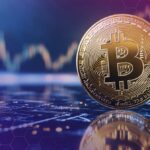Gold prices surged to an unprecedented high, surpassing $4,100 on Tuesday, driven by mounting speculation regarding potential U.S. Federal Reserve rate cuts. The climb was further bolstered by escalating U.S.-China trade tensions, which heightened interest in safe-haven investments, including silver, which also achieved a record peak.
As of 0341 GMT, spot gold reached an all-time high of $4,162.31 per ounce, reflecting a 1.3% increase. Additionally, U.S. gold futures for December delivery rose by 0.9%, reaching $4,171. The yellow metal has experienced a remarkable 58% increase this year, breaking the significant $4,100 barrier for the first time on Monday.
The surge in gold prices can be attributed to a mix of geopolitical instability, economic uncertainty, expectations for rate cuts, substantial central bank purchases, and strong inflows into exchange-traded funds. Analysts from Bank of America and Societe Generale anticipate that gold prices could reach $5,000 by 2026, while Standard Chartered has revised its 2026 average forecast upward to $4,488.
Silver also enjoyed a boost, jumping 1.1% to $53.13 and briefly touching a record high of $53.45 earlier in the session. This increase is largely influenced by the same factors propelling gold prices, coupled with tight market conditions.
Kelvin Wong, a senior market analyst at OANDA, pointed out that although trade tensions are notable, they are not the primary catalyst for the current rally. Instead, the increasing expectations for the Federal Reserve to continue its rate-cutting trajectory are significantly lowering long-term funding costs, which tends to favor non-yielding assets like gold.
Anna Paulson, the chief of the Philadelphia Federal Reserve, remarked that growing risks to the labor market strengthen the argument for further interest rate cuts in the U.S. Investors are now eagerly awaiting an address from Federal Reserve Chair Jerome Powell at the National Association for Business Economics (NABE) annual meeting, which is anticipated to provide insights into future rate-cut decisions. Current trading reflects a 97% probability of a 25-basis-point cut in October and a 90% chance for December, reinforcing the appeal of gold in a low-interest-rate environment.
In parallel developments, U.S. President Donald Trump is expected to meet Chinese leader Xi Jinping in South Korea later in October, as tensions escalated with China’s recent announcement to broaden rare-earth export controls. Trump’s response included a threat of imposing a 100% tariff on Chinese goods and instituting export controls on critical U.S.-manufactured software, set to take effect on November 1.
Accompanying the precious metal rallies, platinum prices noted a rise of 1% to $1,661.70, while palladium jumped 2.2% to $1,507.50. These developments highlight the shifting dynamics in global markets amidst ongoing economic uncertainties and geopolitical strains.






